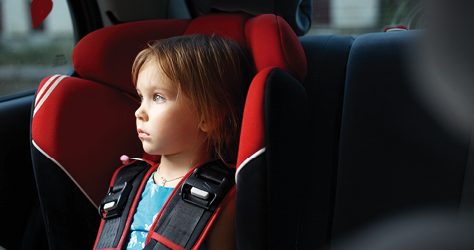
Alongside those cute baby grows and Moses basket, one thing you’ll need by law if you’re planning to put your little one in a car, is a car seat.
However, with different laws now running alongside each other it’s perfectly normal to suffer from ‘car seat confusion’.
Car seat safety
So here’s our guide to picking the best car seat for your little traveller.
What’s the law now?
Currently the law (R44) states that all children travel in an appropriate car seat until they reach their twelfth birthday – or 135cm in height (whichever comes first).
It also says an ‘appropriate ’car seat is one that is in the correct group for a little one’s weight and many parents in the past have switched their baby into a forward facing car seat once they reached 9kg. However, there is now a new legislation that runs alongside this previous law called i-size which takes into account the length of the baby rather than weight.
i-size – the new car seat law
This regulation has been introduced to further improve car seat safety and make it easier for parents to understand.
i-size came into force in 2013, making rearward facing travel mandatory for babies from birth to 15 months old. It will run in parallel to the existing regulation R44 for the next few years (manufacturers will be able to produce R44 seats until 2018; consumers can use their seats past that date).
So if this is your first baby you may want to get prepared and buy an i-size car seat.
The 5 key points of i-size are:
- ISOFIX installation only – Installing a child seat with a car seat belt is often the root cause for the high levels of misuse still commonly reported. ISOFIX is much simpler to use and therefore the new regulation promotes ISOFIX.
- Rearward travelling mandatory until 15 months – After 15 months, the baby can either be kept rearward facing in a suitable seat or changed forward facing. i-size permits forward-facing travel for children from a minimum height of 76cm (and they must be older than 15 months), however parents can continue to seat their children rearward facing if they choose.
- Side impact testing – Although 20% of all accidents involve side impact, the current R44 does not test for side impact. i-size however requires side impact test for the car seat to pass the test. Furthermore, the i-size test in general has more stringent criteria, better simulates recent accident research data and requires a new series of test dummies (Q Series) that relate more accurately to today’s children.
- Child’s height/length – i-size uses the child's length to determine if the seat fits the child, rather than their weight which is what R44 uses. Parents tend to know their child's height better than their weight (height is also used on children’s clothing). This will make it easier for parents to judge if the seat is suitable for their child and when they should move the child into a larger seat.
- Vehicle compatibility – New cars/models are being introduced into the market by the vehicle manufacturers which will have ISOFIX anchorage points marked specifically with an i-size label & detailed information will be shown in the vehicle’s handbook. This will reassure the parents that they can install their i-size car seats in positions marked with an i-size label in their cars.
Why is rear facing travel for your child said to be safer?
Your little one’s head is proportionally large and heavy compared to the rest of their tiny body. And the neck bones and muscles are not yet as strong as older children.
It’s not a nice thought, but if you had an accident while your baby was traveling forwards in the car, their head would be unrestrained meaning it would be thrown forward and a significant injury might occur. The not-so-strong muscles of the neck would not be able to adequately support the head in the event of an accident if babies were to travel forward.
When the same baby travels rearward facing, the back of the protective car seat shell and the padded side wings protect the head and neck, and absorb and spread the forces of the impact more evenly.
As the baby gets older, their neck muscles continue to develop and get stronger. i-size therefore allows for a baby to turn forward facing after 15 months. However it’s still safer to keep the child travelling rearward facing but this now becomes a parental choice rather than a legal requirement.
What is IsoFix?
ISOFIX was invented by Britax Römer and Volkswagen back in 1997 and has since then become an international standard for fitting child car seats into vehicles. It's designed to make installing your car seat quick and easy – all you need to do is click the car seat into the ISOFIX connectors in the car. Plus, ISOFIX is also safer as it helps prevent the installation mistakes which can often happen with belted installations. New cars come fitted with ISOFIX anchorage points but if you’re unsure, check your car - you can find the ISOFIX points (hooks) between the base and back of your car seats or consult your car’s handbook.
Once you’ve determined whether your car supports this, you’ll have to make sure your ISOFIX child seat is approved for use in your car model. This can be done through asking in-store when you’re buying your car seat or consulting the car seat manufacturer.